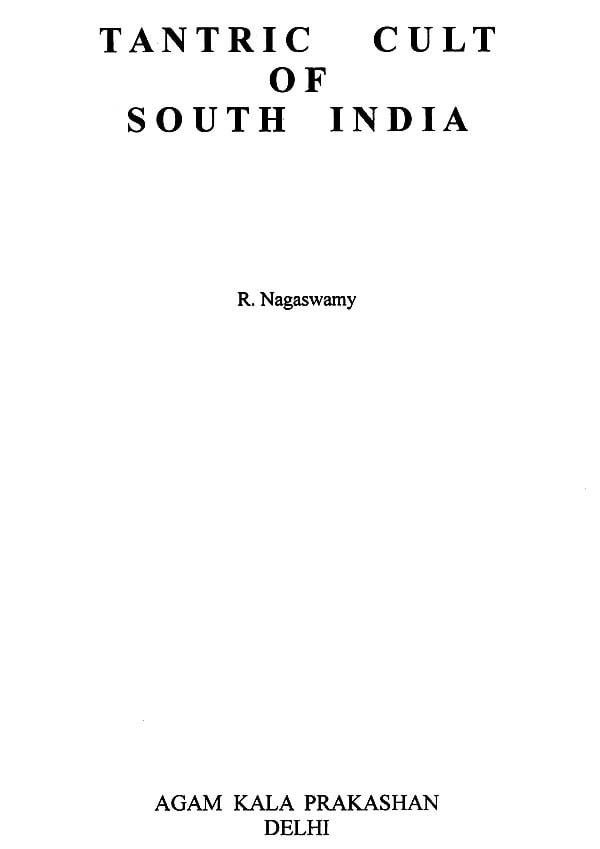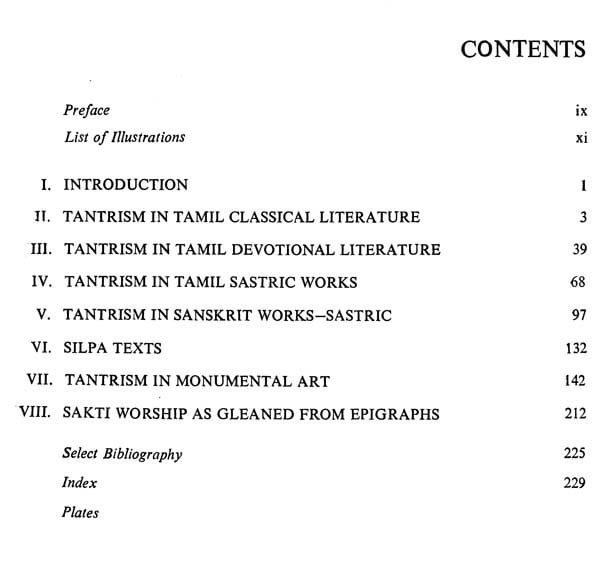
Tantric Cult of South India
Book Specification
| Item Code: | AZG161 |
| Author: | R. Nagaswamy |
| Publisher: | Agam Kala Prakashan, Delhi |
| Language: | ENGLISH |
| Edition: | 2021 |
| ISBN: | 9788195009824 |
| Pages: | 306 (Throughout B/w Illustrations) |
| Cover: | HARDCOVER |
| Other Details | 11.00x9.00 inch |
| Weight | 1 kg |
Book Description
I recall with gratitude the encouragement received from late Dr. T.P. Meenakshi sundaranar, former Vice-Chancellor of Madurai University, who was mainly responsible for initiating me into this research. I express my profound thanks to Dr. Francois Gros, Director, French Institute of Indology, Pondicherry and Madam Lemhault of the same Institute who very kindly placed I my disposal their entire photographic collections for study and evinced great interest in my pursuit. Nearly half of the illustrations included in this book were kindly supplied by the French Institute. To Shri H. Sarkar, Director, Archaeological Survey of India and other eminent scholars like Shri Saw. Ganesan, Shri M. Arunachalam, Mr. A.S. Jnanasambandam and Shri V. Ganapathi Sthapathi, I express my profound thanks for their interest in this work.
I owe a great debt of gratitude to the Staff of the Tamilnadu State Department of Archaeology, who patiently helped me in my studies. To the Government of Tamilnadu to which I owe everything, I express my profound thanks for very kindly permitting me to pursue the study.
The indefatigable Agam Prasad of Agam Kala Prakashan, deserves my thanks for not only taking up my work for publication but also having got the same printed so beautifully.
Though Tamil literature is available from the beginning of the Christian era, it is only with the advent of the Pallavas that monumental art and architecture have survived. So I have taken the Pallava and later periods as the main periods of the enquiry. The Pallavas appear in the history of the Tamil country from the end of the 3rd century A.D. and survive till the end of the 9th century A.D., but their art and architecture are extant only from the 7th century A.D. The Sakta cult culminates in the 12-13th century A.D. After the 16-17th century he cult concepts exhausted themselves and what we get later is only a repetition of the ame ideas and representations. So I have ended my enquiries with the end of the 16th entury A.D. I have not included Buddhist or Jain cults. I have also not included the Sakti cult manifested in the Vaishnava faith.
**Contents and Sample Pages**


















